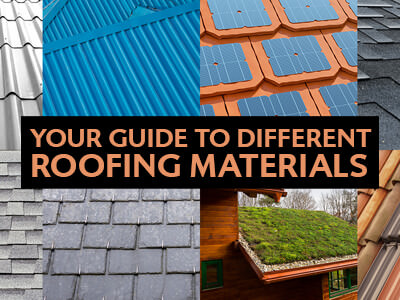
Everything You Need To Know About Roofing History, Trends and Replacement
Shelter from the elements is one of the basic needs of humanity; a need that inspired thousands of years of architecture and construction. Roofing is a key part of our buildings and many other structures, and what follows is just about everything you need to know about its history, trends, and replacement.
A Brief History Of Roofing
Until the appearance of ceramic roof tiles in China sometime around 1000 BC, many buildings in the ancient world had flat roofs made of the same material used in the rest of the construction. For example, the roofs of ancient Egyptian houses were made of mud-brick supported by wooden poles or planks.
In many places, people lived in simple huts or roundhouses with wattle and daub walls and roofs made from turf placed over support beams. The ancient Greeks started replacing thatched roofs with tiles of fired clay sometime between 700 and 650 BC.
In Britain, the first roof tiles were the clay tiles used by the Romans around 100 AD. However, tiles were a luxury few people could afford, and it was around 735 AD that thatched roofs became a popular replacement for turf roofs. A third popular option appeared sometime around 1035 when wood shingles started being used for roofing material.
Apart from the material not being suited to Britain’s damp climate, it also literally added fuel to fires in settlements and cities such as London. This led to King John issuing building regulations in 1212 that stipulated that clay tiles were to be used for roofs in London. Slate tiles were first used for roofing during the 1300s.
Thanks to the Industrial Revolution, the 19th century saw mass-produced clay tiles become the most popular roofing material. The 1800s also saw the introduction of corrugated iron roofs. Other roofing innovations happened in the early 1900s when people started using asphalt shingles and concrete tiles.
During the 1970s, asbestos tiles were added to the roofing options that people could choose from. The same decade also was when green roofing became a popular choice; a trend that began when Germany started investigating the value of such roofs during the oil crisis.
Trends In Roofing
As can be expected, trends in roofing change over time due to developments in design, changes in aesthetics, availability of materials and the demands of the local climate. Such trends are expressed in terms of roof design, that is, whether they are flat, gabled, arched, butterfly, domed, or mono-pitched, as well as in the materials used to build them. Other considerations, such as energy efficiency or green principles, also influence trends in roofing.
Green roofs have reappeared as one of the current trends in roofing. They are in keeping with the fight against climate change, and they can help improve the quality of the air. They also can contribute toward managing stormwater runoff, and they can reduce heat island effects.
Another earth-friendly roofing trend is the use of solar shingles and tiles rather than traditional solar panels. Other trends include polymer-based synthetic roofing made from rubber and plastic, and silicone roof coatings.
Roof Replacement Tips
There are a few things you should remember when faced with the prospect of replacing your roof:
- 1. Consider more than just aesthetics. Take climate, materials, durability, energy efficiency, ventilation, and cost into account.
- 2. If you have an asphalt shingle roof, you can add a second layer of shingles or cover the first layer with a metal roof. Even if this is an option, you should consider removing the first layer, as it gives you the chance to inspect the wooden beams, and to install water and ice shields.
- 3. Use the best materials that you can afford.
- 4. Get your paperwork in order, including receipts, town council permissions/permits, and warranties.




